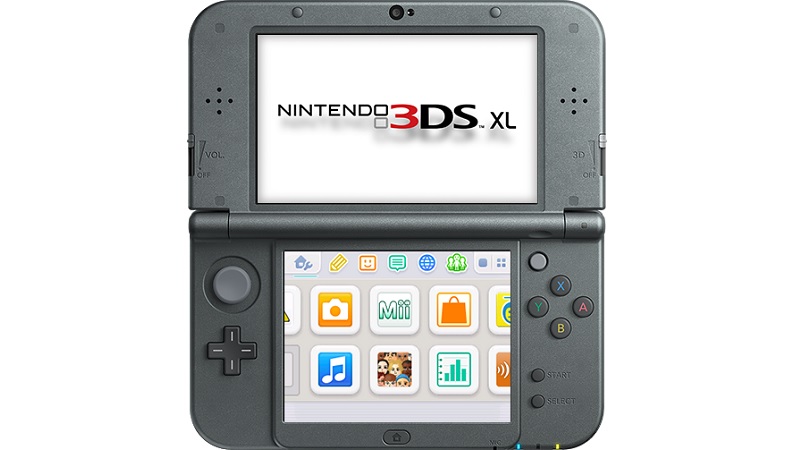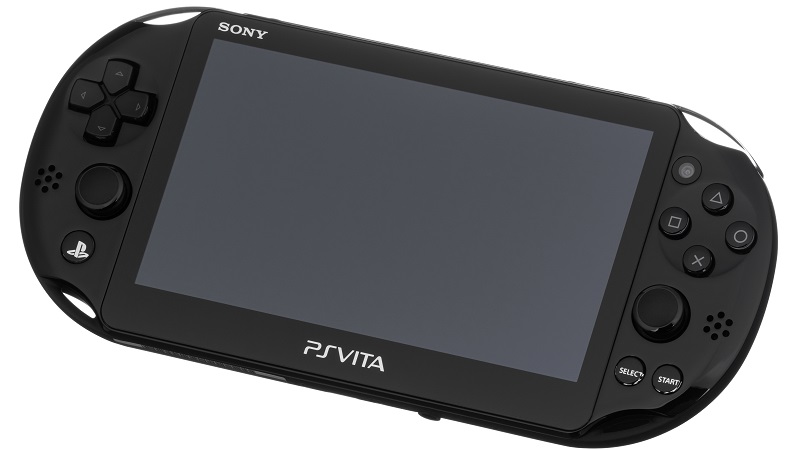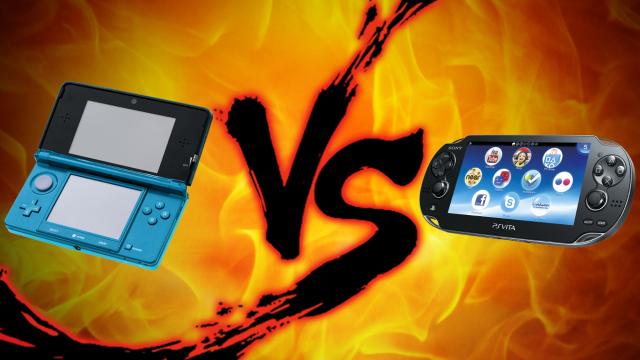The Nintendo 3DS and Sony PlayStation Vita have put amazing games in players’ hands over the last four or five years, but they each offer a very different experience. Both systems have matured and seen a lot of changes, and now that they have likely reached their final form, it’s time to compare the two.
The Contenders
There are tons of mobile games these days, but the best on-the-go gaming still happens on dedicated handheld systems. If you want the best mobile gaming experience, you’ll need to chose between these two pocket-sized consoles:
- Nintendo 3DS (from around $220 to $260, depending on the model): There have been several versions of Nintendo’s glasses-free 3D handheld since its launch in 201: The original 3DS, the 3DS XL, the 2DS, and now the New 3DS and New 3DS XL. The latest and greatest system will run you around $259 unless you find a deal. The New 3DS models, however, do not come with an AC adaptor. It’s sold separately for around $18. The 2DS, on the other hand, is about $148. It plays nearly all of the 3DS game library, but without offering the 3DS’s glasses-free 3D capability. However, fewer and fewer 3DS games are really using the 3D anymore, so you’re not missing a whole lot with the 2DS. A new 2DS also comes with an AC adaptor. For the sake of this Sunday Showdown, we’ll be mostly covering the specs of the 3DS, but the 2DS is worth a mention.
- Sony PlayStation Vita (around $250): The Vita has two different iterations: the original PS Vita, and the newer PS Vita Slim or PS Vita 2000. If you’re buying a new Vita, it’s all but guaranteed to be the newer Slim model. That’s a good thing, because the PS Vita Slim is lighter, thinner, and has longer battery life than the original. The new model has a cost-saving IPS LCD screen, however, and when compared to the original model’s OLED screen, some Vita owners (me) feel that the OLED screen was brighter and more crisp. Overall, though, the new Slim model is an improvement. The Vita comes with an AC adaptor and a USB cable, but the base model does not come with a PS Vita memory card (which is necessary if you want to download games, movies, music, or anything else to your Vita.) Some bundles come with an memory card, but depending on the size, a Sony Memory Stick for your Vita can set you back around $19 for 4GB.
Now, let’s get down to the nitty gritty details of each handheld, and what it’s like to own and play one.
Hardware and Use: How These Two Systems Differ
The 3DS offers a unique gaming experience you can’t really get anywhere else, but sacrifices graphical power to do so. The Vita opts more for a “home console you can take with you” concept that provides great graphics and functionality, but lacks in portability. Let’s see how else these two consoles differ in terms of hardware and usability.
Nintendo 3DS

- Hardware: The top screen is an autostereoscopic LCD screen that makes everything look 3D without the need for any glasses or other equipment. A slider to the right of the screen can adjust the 3D effect or turn off the 3D effect entirely. The bottom screen is a QVGA resistive touchscreen that can be used with either your finger or the stylus that comes with each system. There is also a front-facing camera, rear-facing camera that is capable of taking 3D stereoscopic photos and video, microphone, infrared sensor, stereo speakers, headphone jack, and Wi-Fi connectivity.
- Storage: The 3DS has 1GB of internal flash memory which is mostly occupied by the operating system and the essential applications like System Settings. Each 3DS comes with a 4GB SDHC card, however, and supports SDHC cards up to 32GB. These can be found for super cheap compared to the Vita’s counterparts.
- Graphics: The 3DS’s graphical power lies somewhere between the Nintendo 64 and the Nintendo GameCube on a good day. The New 3DS has 10MB of dedicated VRAM and graphics don’t look nearly as nice as the Vita’s. Of course, Nintendo has proven that it’s not graphics that sell a system — it’s games that are fun to play.
- Portability: The 3DS has a built-in 1750 mAh lithium-ion battery capable of lasting between 3.5 to 6.5 hours of actual game time. It will last longer if you close the system and let it go into sleep mode. There are also cases and external battery packs on the market that will extend battery life, and because the 3DS’s design, they don’t make the console any less portable. In terms of actual size, the New 3DS is 3 ⅛” wide, 5 ½” long, and about ⅞” thick. The New 3DS XL is 3 ⅝” wide, 6 ⅛” long, and about the same thickness as the standard New 3DS.
PlayStation Vita

- Hardware: The Playstation Vita is a bit more of a straight shooter when compared to the 3DS. It has one large LCD touch screen, a front-facing camera, a back-facing camera (both capable of taking photos and recording video), and a micro USB port for transferring data and charging. It also has a rear touch pad (used in some games), stereo speakers, headphone jack, microphone, the Sixaxis motion sensing system found in Playstation 4 controllers, as well as Wi-Fi and Bluetooth connectivity.
- Storage: The Vita has 1GB of internal flash memory and uses proprietary PS Vita memory cards, which are available in sizes of 4 GB, 8 GB, 16 GB, 32 GB and 64 GB. No other memory card formats will work. Unfortunately, these memory cards are obscenely expensive when compared to similar non-proprietary memory cards, and they are all but required if you want to do anything substantial with your Vita. The smallest available, 4GB, will set you back around $US19 for 4GB and an 8GB one hovers around the $60 mark.
- Graphics: The Vita is a handheld graphics powerhouse, and sits somewhere between the PlayStation 2 and the PlayStation 3 in comparison (closer to the PS3). It has 128MB of dedicated VRAM and games look gorgeous on its LCD screen.
- Portability: The Vita’s battery is a 2200 mAh lithium ion battery that lasts about 4 to 6 hours playing games (longer if in sleep mode). The Vita is 3 ⅜” wide, 7 ¼” long, and the current model is only about ⅝” thick. It’s not exactly pocket friendly, and the large screen is vulnerable to scratching. You can protect it with a case, but a lot of cases available on the market are cumbersome due to the Vita’s design.
As you can see, both handhelds approach mobile gaming very differently.
The Games
Normally, game exclusives would be a major selling point for a console, but the 3DS and Vita deal almost entirely in exclusives. For the most part, a game you can get for one handheld won’t be available for the other. This makes the 3DS and Vita complementary competitors in a sense because there’s no one right console to buy if you want the best experience in your “favourite games.” Let’s take a look at some of the best games each handheld has to offer.
Nintendo 3DS
- Big exclusives: Pokemon X and Y, Mario Kart 7, Super Mario 3D Land, Animal Crossing: New Leaf, Super Smash Bros., The Legend of Zelda: A Link Between Worlds, Fire Emblem: Fates, and many more.
- Backwards compatibility: The 3DS is backwards compatible with Nintendo DS cartridges (its predecessor), as well as tons of downloadable GameBoy, GBA, NES, SNES, and even a few Sega Game Gear games in the Virtual Console.
PlayStation Vita
- Big name exclusives: Uncharted: Golden Abyss, Assassin’s Creed III: Liberation, LittleBigPlanet PS Vita, Persona 4: Golden, Killzone: Mercenary, Tearaway, Persona 4: Dancing All Night, and many more.
- Backwards compatibility: The Vita is only backwards compatible with some PSP and PS One games purchased from the PlayStation Store app.
Online and Connectivity Features
Both handhelds have Wi-Fi functionality and online features, but online gaming isn’t really what they’re built for. They each have their own online connectivity quirks, however.
Nintendo 3DS
The 3DS lets you create or link your existing Nintendo Network ID and add friends, share game data, buy and download new games and applications in the Nintendo eShop, send messages with SwapNote, and access the Miiverse. Some games allow online multiplayer as well, but it varies by game. There is also a built-in web browser just in case you’re ever not around your phone or computer. For the most part, the 3DS’s online functionality is pretty barebones, but there are no subscription fees, so it’s hard to complain.
What the 3DS lacks in online functionality gets mostly made up for with other connectivity features. StreetPass encourages you to carry your 3DS with you everywhere you go. As long as it’s in sleep mode, your 3DS will connect and interact with other 3DS systems and StreetPass relay points it encounters, offering you a way to be social with other players without the internet. If you happen to cross any Streetpass events or Nintendo Zone Wi-Fi networks, you’ll often get some free stuff like game demos and in-game items too.
PlayStation Vita
The Vita uses the download two free games from the PlayStation Store every month. The Vita also has a web browser if you really need it.
The Vita’s equivalent of StreetPass, Near, was axed by Sony last year, but the handheld still has a few nifty connectivity features up its sleeve. The Vita can be used to play games on your PS3 or PS4 console remotely over a decent Wi-Fi connection or your home network. It’s a nice feature to have when someone else in your household wants to use the TV or you just feel like playing Destiny on your toilet.
Multimedia Features
In a world of smartphones, tablets, and laptops, it seems a little odd to reach for your handheld gaming system to access media. That said, there are still a few features and options for each console worth going over.
Nintendo 3DS
The Nintendo 3DS has a YouTube and Netflix apps available if you want to stream video. For music, you can add MP3 files to your SD card and play them in the 3DS Sound application, but the experience is not ideal. You’re better off listening to music on just about any other device.
PlayStation Vita
The Vita is a little more multimedia friendly with a built-in video player, dedicated MP3 player, and a photo viewer. It also has Netflix, Crunchyroll and access to the PlayStation Video service for downloading and renting movies. The Vita even has a Skype app. You can also access local media files from your PS3 console or computer over your home Wi-Fi network with the Media Player app. Sony designed the Vita to be a device that does a little of everything, like a smartphone or tablet that also plays great games. That vision hasn’t really panned out over the years, but a lot of that “multi-tool” functionality is still there. It’s not ideal, but they’re nice features as long as you consider them bonuses and not the main selling point of the console.
They’re Each Truly Unique: Why Not Both?
There’s no right or wrong choice here. It just depends on what kind of mobile gaming experience you’re after, and which games appeal to you the most. The games are largely what will drive your decision. I’ve owned every iteration of the 3DS and Vita (yep, I’m one of those), and I can honestly say they’re both systems that are worth owning.
Gun to my head, I’d say go with the New Nintendo 3DS or New Nintendo 3DS XL if you can only pick one (I have the regular size). It has an amazing and expansive games library, which is what’s really important for a game system. Not to mention you also have access to every Nintendo DS game as well, and that system had an equally epic library that you can play through on the cheap. Add on the fact that Sony has all but given up on supporting the Vita, and it seems that the 3DS is going to give you the most bang for your buck in the long run. Even if you don’t care about playing games in 3D, Nintendo’s handheld reigns supreme.
That said, the Vita is still an incredible, powerful handheld — especially if you like JRPGs, cheesy import titles, or any games that have a Japanese flair to them. It’s also better suited for those who want to play games that are more comparable to today’s console games in terms of graphics, gameplay, and more mature content. If you already have a PS3 or PS4, the remote play actually works pretty well and adds some serious value to the handheld. It also beats out the 3DS in regards to multimedia. Listening to music and watching movies on the Vita’s big screen actually makes sense, where it seems like a last resort on the 3DS. The Vita is a well-balanced system that deserved a lot more support than it got, and is still capable of delivering a great gaming experience. If you can nab a Vita at a decent price, it’s totally worth it too.

Comments
4 responses to “Handheld Gaming Showdown: Nintendo 3DS Vs. PlayStation Vita”
I have both and I love them both Equally :P!! Honestly though, the vita feels like it slays in the hardware area and the dual analogs is something I love in it as it opens it up to playing normal games compared to the nintendo nub. But the 3DS does have a great array of games that work perfectly for the control style.
I think a big point comes into the games area though, like the article states, the 3DS vs Vita are typically exclusive on games for each hardware and I feel this is more true for the 3DS. The thing is the games on the vita normally always come out on either PS3, Steam, PS4 etc while the 3DS doesn’t. As someone who has a PS3 and Steam, its hard to really recommend a Vita as you can mostly get the games elsewhere. This isn’t true for the 3DS where a lot of games are 3DS only, especially the big bucks ones like Pokemon.
Also in Aus I find it very difficult to get Vita games, my EBGames here doesn’t stock any and I think JB has reduced stock, so your pretty much set at PSN and buying a HUGE cost memory card (or using importing) as opposed to the microSD that 3DS uses.
To be honest I truly wish the Vita was better supported just like the article says, and I feel that Sony failed the product a bit, that deserved so much more. Would love to see it revived again somehow, as I enjoy playing games on something portable with the same game play of full on consoles.
Bought a 3G fat vita a year ago for 120 bucks used at EB games, games are pretty pretty cheap, and XCom enemy within just came out on the platform, i use it a lot for remote play, last bight was playing blops3 zombies from my parents place on the over side of town, ping is fine across the net for non competitive fps, biggest gripes is you really need to buy a grip if you want extended sessions, i just hot a nyko power grip from the US amazon, about 80 bucks posted and has a built-in backup battery, and next is some thumbstick covers because they’re not the best for accuracy so new covers should give a better experience.
Owned a 3DS and sold it, the games just didnt interest me to much while having had PS+ for about 4 years and always downloading all the games i had a game library of Nearly 100 games from day one. Youll also find big games in remote play if you go controls it actually shows the vita and you can change the controls for the vita specifically. I was pleasantly surprised by it in blops3
I have a New 3DS XL, and I have a PSTV I bought cheap from overseas, but it doesn’t play a fair percentage of the free PS+ titles so it’s tempting to buy a Vita still but I wouldn’t want to pay more than $100 for one.
ive had hours of fun on both. but i think 3DS is the winner in terms of being successful.